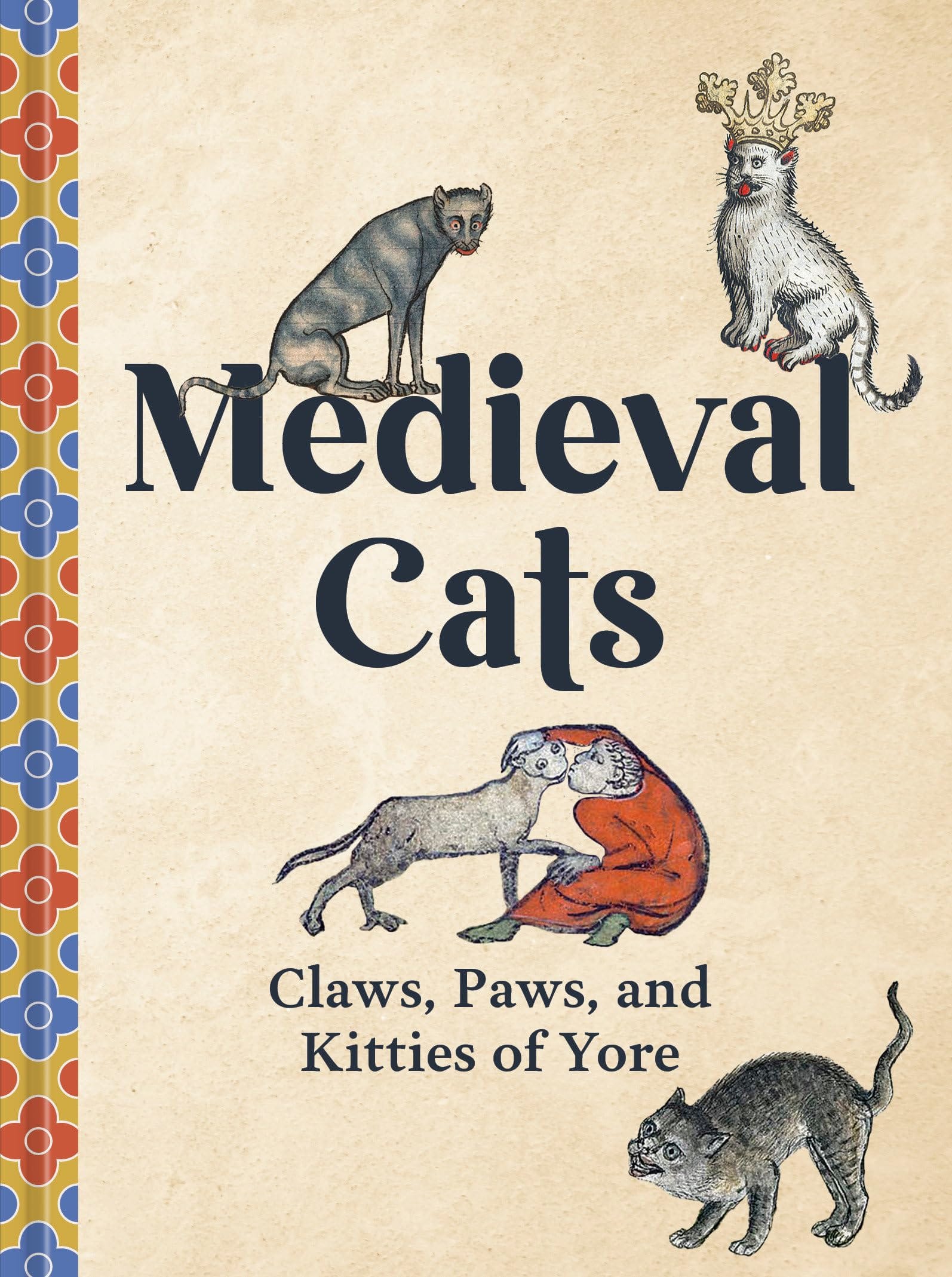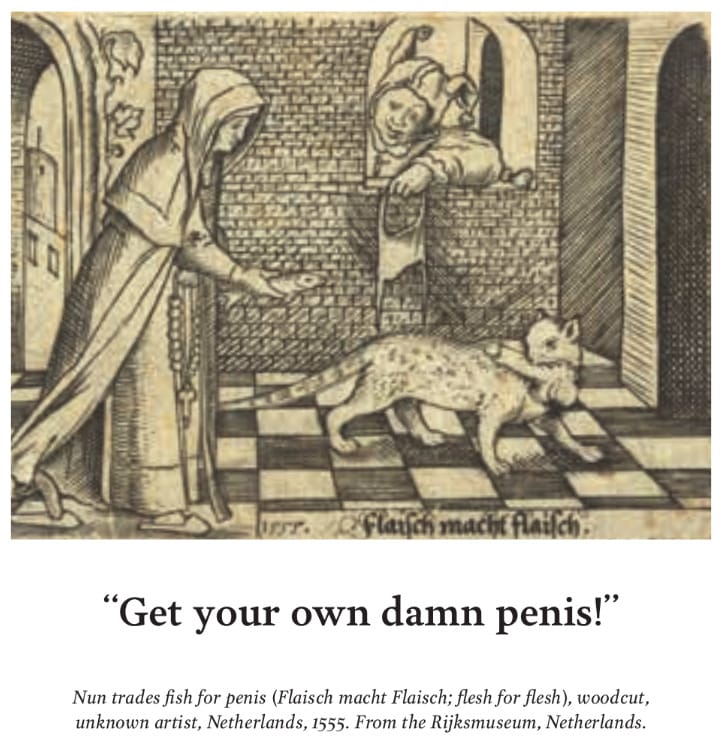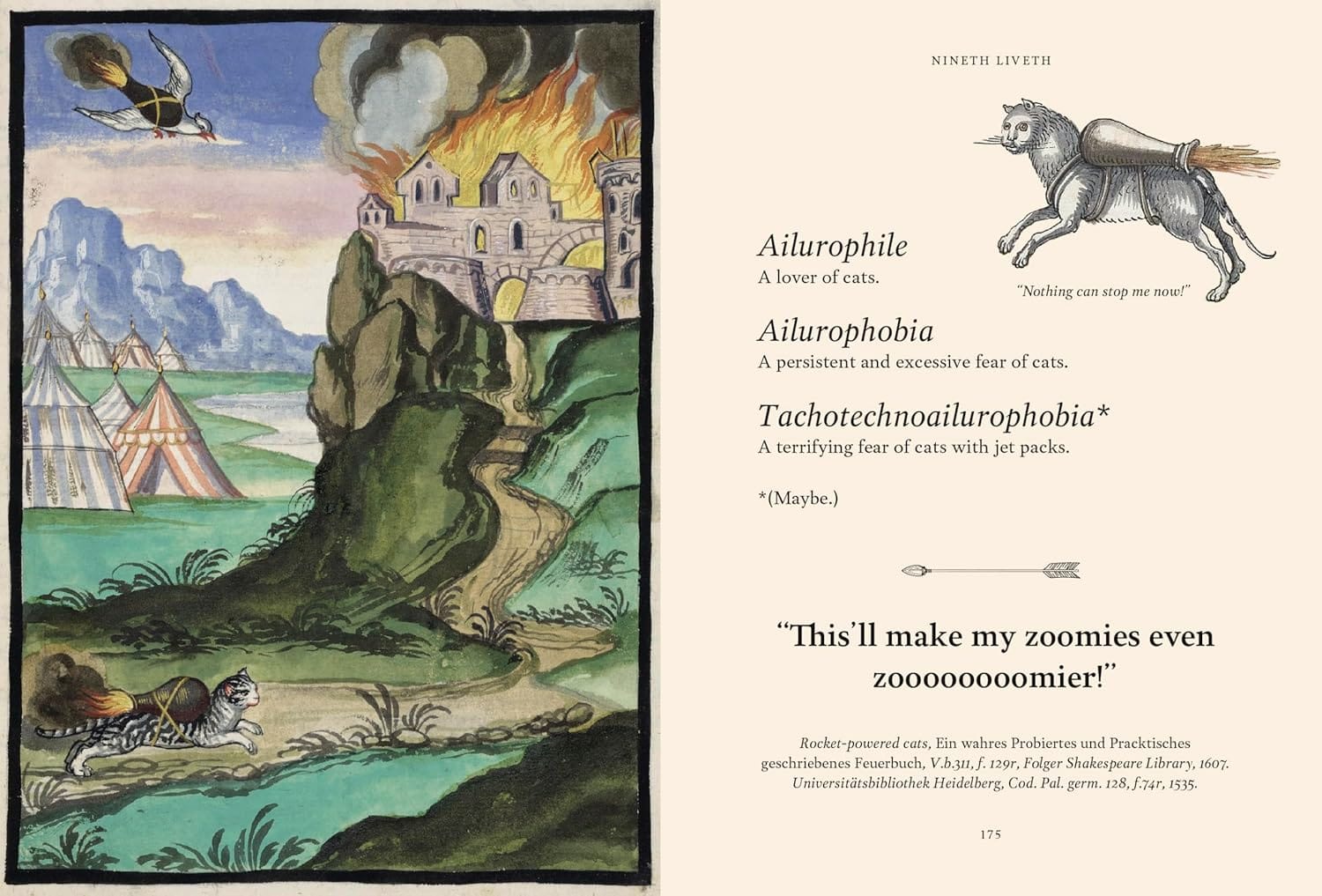 Malcolm Croft (under the pseudonym Catherine Nappington) has produced a compendium of cat illustrations from ancient manuscripts. It's then peppered with a variety of regurgitated facts and captions of a sub-Facebook levels of humour.
Malcolm Croft (under the pseudonym Catherine Nappington) has produced a compendium of cat illustrations from ancient manuscripts. It's then peppered with a variety of regurgitated facts and captions of a sub-Facebook levels of humour.
There are a few hundred pages of illustrations for you to flick through - but they're all devoid of context. As sumptuous as the images are, they're surround by commentary which wouldn't be out of place on a disused Tumblr blog. There's also a lot of discussion about the various ways cats were tortured and killed.
It is hard to know who this book is for. It is written in such a simplistic tone that at first I thought it was targetted at the children's book market. And yet, despite reading like a kids book, there are numerous references to drugs - with captions suggesting cats are tripping on catnip, or have the fear, or that their mice have been spiked.

Yeah. OK. There's only so often you can smirk at an illustration of a cat licking its bum before the joke wears thin.
Academically, it isn't brilliant. It says that the poem Pangur Bán was written around the year 900CE - it's actually from the 9th century. It suggests that the proverb "Curiosity killed the cat, satisfaction brought it back" is from the Middle Ages, but it is a 20th century invention. It also repeats the discredited idea that Newton invented the cat-flap. There's a bizarre claim that the pub name "The Cat and Fiddle" is a reference to Catherine of Aragon - despite the pub name predating her by more than a century. Similarly, the quote "Even the smallest feline is a masterpiece of nature" is given as Leonardo da Vinci, c. 1530. The only problem is, there's no evidence he said that. Oh, and he died in 1519
I think a few of the image references might be duff, but it's hard to say. Although each illustration is given a provenance, none are clickable. Can you find out more about an image using just the reference "Nicolaus de Lyra super Bibliam, Italy, Latin MS 162, f. 252v, 1402"? I couldn't.
Most of the images are from European works with only a couple of illustrations from Islamic sources. There is a rich history of cats appearing in Japanese and Chinese texts of the same period - but this book ignores them.
It almost dives into interesting territory by giving us factual snippets:
The Book of Kells, has a whole section on kitties called the Catslechtae. It outlines the medieval code of conduct for owning a cat.
Sadly, there is no further information forthcoming. Surely the Catslechtae must have been at least one interesting law to discuss?
The illustrations are gorgeous - but there's absolutely no explanation of them. Why were the cats inserted? What was the symbolism? Do cats appear more than other domestic animals? No idea. Take this caption of "Rocket Powered Cats":

This is actually a fascinating example of cats and other animals being used for warfare. The book could have shown dozens of contemporary examples but it just moves on to the next illustration and half-hearted commentary.
If you look at the pictures, and ignore the text, it is a diverting enough book.
Personally, I'd recommend you read Lolcats of the Middle Ages or Cats get off the page from the British Library.
Thanks to NetGalley for the review copy.
2 thoughts on “Book Review: Medieval Cats - Claws, Paws, and Kitties of Yore by Catherine Nappington”
I recommend Kathleen Walker-Meikle's Medieval Pets and I think she has a book specifically on cats in manuscripts.
| Reply to original comment on bsky.app
R
It’s from the Latin manuscript collection at the university of Manchester. But not digitised. https://www.digitalcollections.manchester.ac.uk/collections/latin/6
More comments on Mastodon.